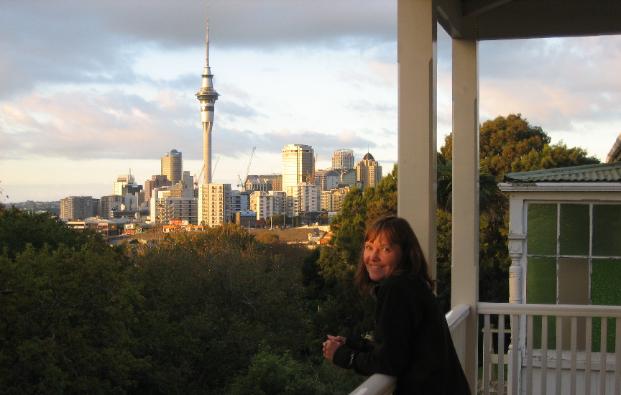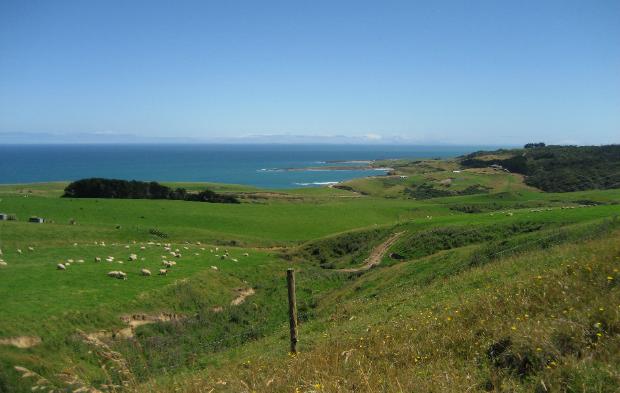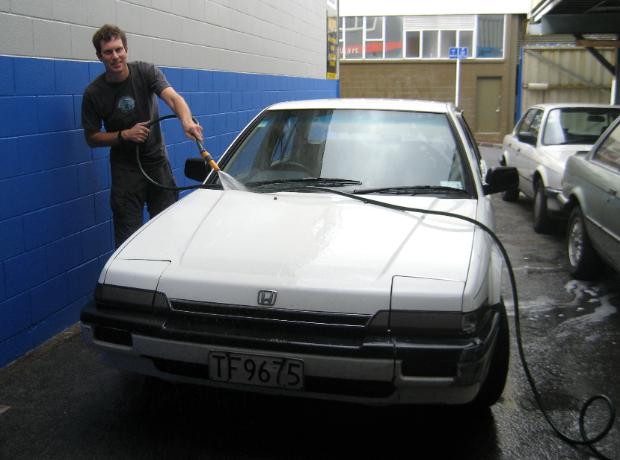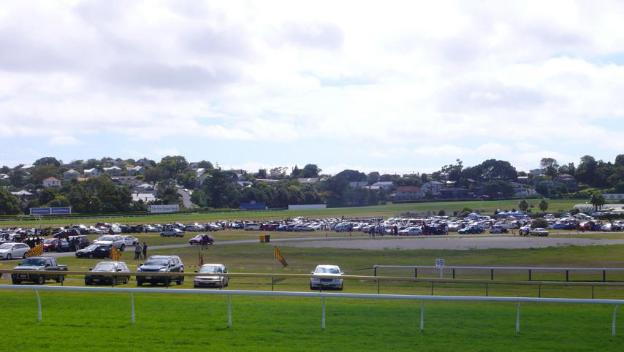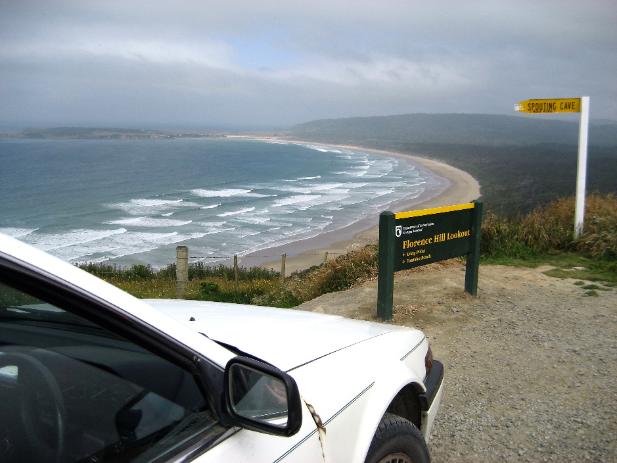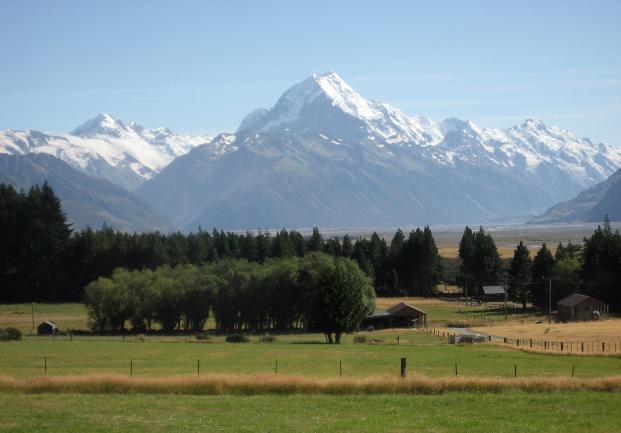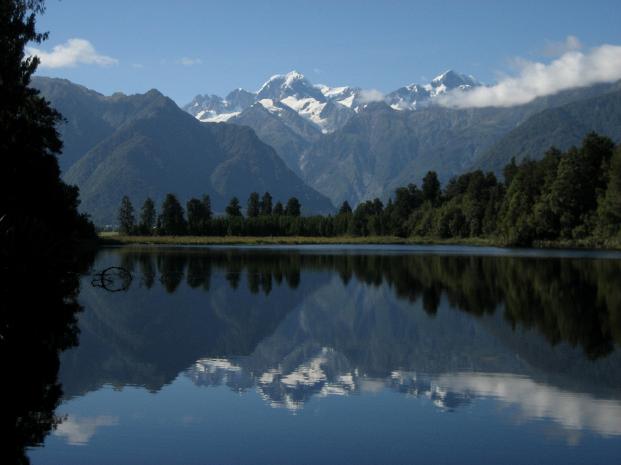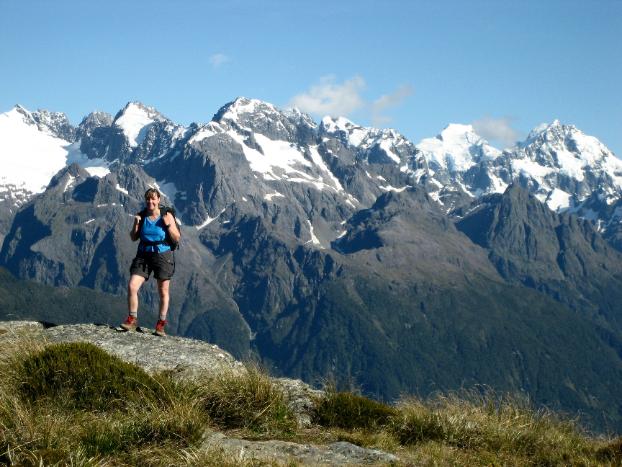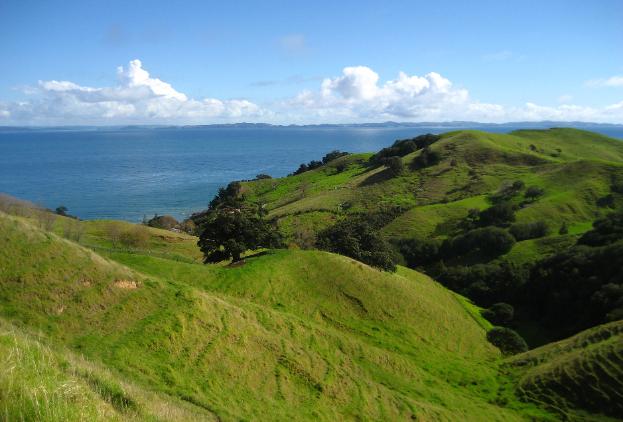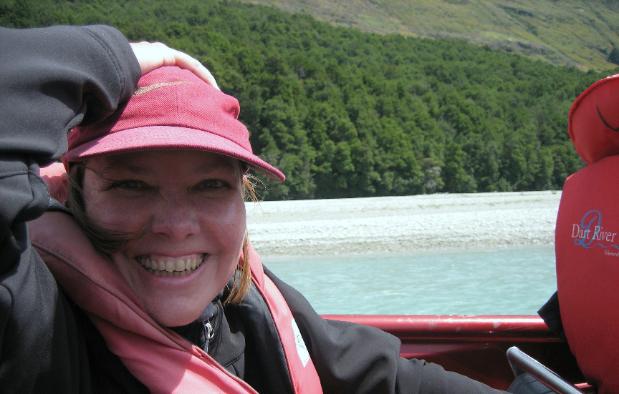
Early Retirement
| Buying and Selling a Car Overseas |
If you plan to travel overseas for several
months at a time, you should consider the
possibility of buying a car. It gives you the
freedom to go where you want when you want.
Getting to small towns and trailheads and off
the beaten path destinations is easier, and you
can stay at lodgings on the outskirts of town
that tend to offer better value.
We spent four unforgettable months in New
Zealand, and the trip wouldn’t have been the
same without our own wheels. Renting a car for
four months would have been expensive, and
relying on public transport too inconvenient
given our desire to get off the beaten path and
see the back roads and green countryside. So
two days after arriving in Christchurch, we paid
$1200 US for a 1986 Honda Accord with 115,000
miles on it. We immediately dubbed it the White
Wizard, and with all its quirks and peculiarities
(it had a choke knob and haunted door locks), it
became part and parcel of our experience in
New Zealand.
months at a time, you should consider the
possibility of buying a car. It gives you the
freedom to go where you want when you want.
Getting to small towns and trailheads and off
the beaten path destinations is easier, and you
can stay at lodgings on the outskirts of town
that tend to offer better value.
We spent four unforgettable months in New
Zealand, and the trip wouldn’t have been the
same without our own wheels. Renting a car for
four months would have been expensive, and
relying on public transport too inconvenient
given our desire to get off the beaten path and
see the back roads and green countryside. So
two days after arriving in Christchurch, we paid
$1200 US for a 1986 Honda Accord with 115,000
miles on it. We immediately dubbed it the White
Wizard, and with all its quirks and peculiarities
(it had a choke knob and haunted door locks), it
became part and parcel of our experience in
New Zealand.
| Tip #3. Property Damage Insurance |
All drivers in New Zealand, whether tourists or
locals, are covered under New Zealand law
from a health insurance standpoint. This is
great news for overseas visitors. It means you
can drive in New Zealand without needing to
purchase insurance of any kind if you so
choose. That said, we recommend paying for
six months of optional property damage
insurance. It cost us $125 US and we were able
to buy it at the same place we bought our car.
Basically it covers you for any damages up to a
million dollars to someone else’s car or
property -- not a bad idea since (for Americans
anyway) you’ll be driving on the opposite side
of the road from what you're used to. Our policy
deductible was $500 NZ (~$400 US).
We also paid $25 for a Vehicle Information
Report showing the vehicle’s history and
confirming it was legally owned. This was not
strictly necessary but gave us peace of mind.
We could also show it to prospective buyers
when it came time to sell our car.
locals, are covered under New Zealand law
from a health insurance standpoint. This is
great news for overseas visitors. It means you
can drive in New Zealand without needing to
purchase insurance of any kind if you so
choose. That said, we recommend paying for
six months of optional property damage
insurance. It cost us $125 US and we were able
to buy it at the same place we bought our car.
Basically it covers you for any damages up to a
million dollars to someone else’s car or
property -- not a bad idea since (for Americans
anyway) you’ll be driving on the opposite side
of the road from what you're used to. Our policy
deductible was $500 NZ (~$400 US).
We also paid $25 for a Vehicle Information
Report showing the vehicle’s history and
confirming it was legally owned. This was not
strictly necessary but gave us peace of mind.
We could also show it to prospective buyers
when it came time to sell our car.
| Tip #1. Auckland Car Fair |
Consider scheduling your arrival and departure
dates to coincide with the Sunday car market at
Ellerslie Racecourse, located 30 minutes south
of downtown Auckland. The Auckland Car Fair
is held each Sunday, including public holidays,
from 9 am to 12 noon. This is a big event with
hundreds of cars for sale and thousands of
buyers. Since the car fair isn’t just for overseas
visitors but for everyday New Zealanders, there
are plenty of buyers and sellers even if it
happens to be off-season for travelers.
The gates open at 8 am for sellers and 9 am for
buyers. There's no fee for buyers. Just show up
and start shopping. Bus routes conveniently
connect you from Auckland to Ellerslie if you're
without a car at the start of your trip. The car
fair’s website (carfair.co.nz) also functions as
an online car buying & selling site with photos
so you can preview potential options and even
contact the owner to make an offer online.
dates to coincide with the Sunday car market at
Ellerslie Racecourse, located 30 minutes south
of downtown Auckland. The Auckland Car Fair
is held each Sunday, including public holidays,
from 9 am to 12 noon. This is a big event with
hundreds of cars for sale and thousands of
buyers. Since the car fair isn’t just for overseas
visitors but for everyday New Zealanders, there
are plenty of buyers and sellers even if it
happens to be off-season for travelers.
The gates open at 8 am for sellers and 9 am for
buyers. There's no fee for buyers. Just show up
and start shopping. Bus routes conveniently
connect you from Auckland to Ellerslie if you're
without a car at the start of your trip. The car
fair’s website (carfair.co.nz) also functions as
an online car buying & selling site with photos
so you can preview potential options and even
contact the owner to make an offer online.
As sellers at the tail end of our trip, we arrived
early and paid the entry fee: $35 NZ (about $25
US). We filled out a brief vehicle description
sheet and placed it in the passenger side
window. The entry fee included a “For Sale”
sign on which we wrote our price in big, bold
letters. No pre-booking was required -- we just
showed up on the day.
The car fair is conveniently divided into
sections -- vehicles under $5000 NZ, between
$5000 and $10,000 NZ, and so on. Our 20-year-
old car with its old-fashioned choke definitely
fell in the Under $5000 category.
By 9 am hundreds of prospective buyers were
milling about, walking up and down the rows of
cars. After having spent two long, frustrating
days in the parking garage of the Backpackers
Car Market in downtown Auckland, where only
a handful of prospective buyers had shown up
the entire time, it was a welcome relief to see
so many people. Within the first half hour, we
sold our car to a young Kiwi who liked what he
saw. Transferring the car’s ownership was easy
since all the necessary paperwork could be
filled out right at the car fair for a reasonable
fee (about $25 US, payable by the buyer).
early and paid the entry fee: $35 NZ (about $25
US). We filled out a brief vehicle description
sheet and placed it in the passenger side
window. The entry fee included a “For Sale”
sign on which we wrote our price in big, bold
letters. No pre-booking was required -- we just
showed up on the day.
The car fair is conveniently divided into
sections -- vehicles under $5000 NZ, between
$5000 and $10,000 NZ, and so on. Our 20-year-
old car with its old-fashioned choke definitely
fell in the Under $5000 category.
By 9 am hundreds of prospective buyers were
milling about, walking up and down the rows of
cars. After having spent two long, frustrating
days in the parking garage of the Backpackers
Car Market in downtown Auckland, where only
a handful of prospective buyers had shown up
the entire time, it was a welcome relief to see
so many people. Within the first half hour, we
sold our car to a young Kiwi who liked what he
saw. Transferring the car’s ownership was easy
since all the necessary paperwork could be
filled out right at the car fair for a reasonable
fee (about $25 US, payable by the buyer).
| Tip #2. Warrant of Fitness (WOF) |
You'll want to buy a car that has recently passed
its Warrant of Fitness (WOF) inspection. If a car
has received its WOF, it means it is fit to drive
for the next 6 months as far as the New Zealand
government is concerned. It turns out the WOF
is a big deal when you're buying or selling a
used car in New Zealand. We thought it was just
a rubber stamp, but it is anything but.
The first car we nearly bought had a WOF set to
expire in two weeks. We agreed on a purchase
price but made it contingent on the car passing
its inspection. Since nearly every repair shop in
the country performs WOF inspections (about
$50 US), we simply drove it to a nearby shop.
About an hour later we were surprised to learn
it had failed. The mechanic had a laundry list of
repairs before it would be granted its WOF. A
pebble-sized crack meant the front windshield
had to be replaced. The left rear tire had a worn
tread. Two small patches of rust on the driver’s
side door required repair at a body shop (called
a “panel beater” down under), which would eat
up several days. The repairs were estimated at
$400 US. We opted not to go forward with the
sale. Making our purchase contingent on the
WOF saved us from making a costly mistake.
its Warrant of Fitness (WOF) inspection. If a car
has received its WOF, it means it is fit to drive
for the next 6 months as far as the New Zealand
government is concerned. It turns out the WOF
is a big deal when you're buying or selling a
used car in New Zealand. We thought it was just
a rubber stamp, but it is anything but.
The first car we nearly bought had a WOF set to
expire in two weeks. We agreed on a purchase
price but made it contingent on the car passing
its inspection. Since nearly every repair shop in
the country performs WOF inspections (about
$50 US), we simply drove it to a nearby shop.
About an hour later we were surprised to learn
it had failed. The mechanic had a laundry list of
repairs before it would be granted its WOF. A
pebble-sized crack meant the front windshield
had to be replaced. The left rear tire had a worn
tread. Two small patches of rust on the driver’s
side door required repair at a body shop (called
a “panel beater” down under), which would eat
up several days. The repairs were estimated at
$400 US. We opted not to go forward with the
sale. Making our purchase contingent on the
WOF saved us from making a costly mistake.
| Tip #4. Resale Value |
Consider resale value when purchasing your
vehicle. First and foremost, go for a car that is
in good shape mechanically, but be aware that if
you buy an expensive car or a specialty vehicle,
it may be harder to resell quickly at the end of
your trip. For example, we met people who
bought relatively pricy camper vans upon their
arrival in New Zealand. The camper vans were
no doubt an inexpensive solution to lodging
during their time in Kiwi country, but some of
the folks we met had trouble reselling them at
the end of their trip.
To put it simply, your risk of loss is less if you
begin with a less expensive vehicle. We always
knew we could walk away from our ’86 Honda
Accord altogether, if necessary, gifting it to
charity or giving it to someone, and still come
out all right financially. That brought us a sense
of calm we might not have had otherwise. If you
do buy a more expensive car or camper van,
leave yourself a little extra time at the tail end
of your trip to sell it.
vehicle. First and foremost, go for a car that is
in good shape mechanically, but be aware that if
you buy an expensive car or a specialty vehicle,
it may be harder to resell quickly at the end of
your trip. For example, we met people who
bought relatively pricy camper vans upon their
arrival in New Zealand. The camper vans were
no doubt an inexpensive solution to lodging
during their time in Kiwi country, but some of
the folks we met had trouble reselling them at
the end of their trip.
To put it simply, your risk of loss is less if you
begin with a less expensive vehicle. We always
knew we could walk away from our ’86 Honda
Accord altogether, if necessary, gifting it to
charity or giving it to someone, and still come
out all right financially. That brought us a sense
of calm we might not have had otherwise. If you
do buy a more expensive car or camper van,
leave yourself a little extra time at the tail end
of your trip to sell it.
| Car Markets in Other Countries |
It’s worth noting that New Zealand isn’t the only country with a car market. Australia’s
Sydney Travellers Car Market at Kings Cross is one of several car markets aimed primarily
at overseas travelers. Their website provides useful information on buying and selling a
car in Australia and also serves as an online marketplace with photos for car buyers and
sellers. Car Giant in London is a “car supermarket” with up to 7,000 cheap cars in stock.
While a dealership and not a car market per se, it might serve as a good one-stop shop to
buy and sell a car during an extended trip in Europe.
Sydney Travellers Car Market at Kings Cross is one of several car markets aimed primarily
at overseas travelers. Their website provides useful information on buying and selling a
car in Australia and also serves as an online marketplace with photos for car buyers and
sellers. Car Giant in London is a “car supermarket” with up to 7,000 cheap cars in stock.
While a dealership and not a car market per se, it might serve as a good one-stop shop to
buy and sell a car during an extended trip in Europe.
| We liked the wide-open spaces at Ellerslie Car Fair. Parking was tight at the Backpackers Car Market garage in downtown Auckland, and test driving could be a bit scary there. |
| Without your own car, pastoral New Zealand views like this one in the Catlins are harder to come by |
| Cleaning up the White Wizard before its sale at the Auckland Car Market |
| Having our own car allowed us to explore New Zealand at our own pace and on our own terms |
We liked the wide-open, grassy fields available
for parking at Ellerslie. Parking in the garage of
the Backpackers Car Market in downtown
Auckland was tight. Test drives were also less
daunting on the quiet streets surrounding
Ellerslie than in downtown Auckland. The one
fellow who test drove our car downtown had
never driven on the “wrong” side of the road
before so it was unnerving sitting beside him
in the passenger seat as he negotiated the
busy streets of Auckland for the first time.
In our opinion, the $25 one-day fee at the
Auckland Car Fair was money better spent than
the $60 three-day fee at Backpackers Car
Market (allowing you to park your car for three
days in their garage). To be sure, Backpackers
Car Market might be a reasonable option for
sellers in high season (December to March)
when hordes of overseas backpackers prowl
around for wheels. But in low season (May to
August), it was downright depressing sitting in
that garage waiting for backpackers who didn’t
exist. Of course, if you happen to be a buyer in
low season, you might be able to negotiate a
very low price with desperate sellers with fast-
approaching flights.
for parking at Ellerslie. Parking in the garage of
the Backpackers Car Market in downtown
Auckland was tight. Test drives were also less
daunting on the quiet streets surrounding
Ellerslie than in downtown Auckland. The one
fellow who test drove our car downtown had
never driven on the “wrong” side of the road
before so it was unnerving sitting beside him
in the passenger seat as he negotiated the
busy streets of Auckland for the first time.
In our opinion, the $25 one-day fee at the
Auckland Car Fair was money better spent than
the $60 three-day fee at Backpackers Car
Market (allowing you to park your car for three
days in their garage). To be sure, Backpackers
Car Market might be a reasonable option for
sellers in high season (December to March)
when hordes of overseas backpackers prowl
around for wheels. But in low season (May to
August), it was downright depressing sitting in
that garage waiting for backpackers who didn’t
exist. Of course, if you happen to be a buyer in
low season, you might be able to negotiate a
very low price with desperate sellers with fast-
approaching flights.
| Tip #5. Low Season / High Season |
If your schedule is flexible, plan to arrive in low
season during New Zealand’s winter (April to
August) when backpacker car prices (and airfare
and hotel prices) are at their lowest. Spring
(September to November) is also an ideal time
to arrive. Peak tourist season is December to
February. Selling your car then, when most
backpackers with long-term travel plans are just
showing up, should net you the highest price.
season during New Zealand’s winter (April to
August) when backpacker car prices (and airfare
and hotel prices) are at their lowest. Spring
(September to November) is also an ideal time
to arrive. Peak tourist season is December to
February. Selling your car then, when most
backpackers with long-term travel plans are just
showing up, should net you the highest price.
| Be sure to include a Sunday in Auckland at the tail end of your trip to sell your vehicle at Ellerslie Car Fair |
| The Bottom Line |
if you’re staying in New Zealand for less than a
month, rent – there are fewer hassles. If you’re
staying for more than a month, buy – you’ll save
enough money to make the hassles worthwhile.
Based on online car rental prices, we estimate
renting would have cost us a minimum of $4,000
for the four months we were in New Zealand,
whereas buying and selling a car cost us $1,000.
Heck, with what we learned, we might even turn
a profit next time we travel down under.
month, rent – there are fewer hassles. If you’re
staying for more than a month, buy – you’ll save
enough money to make the hassles worthwhile.
Based on online car rental prices, we estimate
renting would have cost us a minimum of $4,000
for the four months we were in New Zealand,
whereas buying and selling a car cost us $1,000.
Heck, with what we learned, we might even turn
a profit next time we travel down under.
We paid cash for the car in New Zealand dollars
from an Israeli couple at the Backpackers Car
Market in Christchurch. All paperwork and
insurance needs were taken care of at the car
market itself for an additional cost of $160 US.
The car was not much to look at, but it ran well
and had recently passed its WOF inspection
(more on that later).
In retrospect we made some mistakes. We
bought the car in January (high season) and
sold it in May (low season). We also bought it in
Christchurch on the South Island (meaning less
choice of cars and higher prices) and sold it in
Auckland on the North Island (meaning more
competition and lower prices). So we did about
as poorly as could be done -- and yet we still
made out fine. In U.S. dollars we paid $1,200 for
the car, sold it for $525, and spent $315 on
repairs, registration, and inspections. So even
with our mistakes we only spent about $1,000 all
told on our car for the four-month trip. We met
others who actually turned a profit on their cars.
Based on our own experience, here are our top
five tips for buying and selling a car overseas --
specifically in New Zealand -- at the best price.
from an Israeli couple at the Backpackers Car
Market in Christchurch. All paperwork and
insurance needs were taken care of at the car
market itself for an additional cost of $160 US.
The car was not much to look at, but it ran well
and had recently passed its WOF inspection
(more on that later).
In retrospect we made some mistakes. We
bought the car in January (high season) and
sold it in May (low season). We also bought it in
Christchurch on the South Island (meaning less
choice of cars and higher prices) and sold it in
Auckland on the North Island (meaning more
competition and lower prices). So we did about
as poorly as could be done -- and yet we still
made out fine. In U.S. dollars we paid $1,200 for
the car, sold it for $525, and spent $315 on
repairs, registration, and inspections. So even
with our mistakes we only spent about $1,000 all
told on our car for the four-month trip. We met
others who actually turned a profit on their cars.
Based on our own experience, here are our top
five tips for buying and selling a car overseas --
specifically in New Zealand -- at the best price.
| It's wonderful to be able to pause by the side of the road whenever you want to soak in the views. This is New Zealand's highest peak, Mount Cook, looming over the tiny hamlet of Glentanner. |
| Freedom to explore is what you're really buying. You can get off the beaten path to wonderful places like this -- the green hillsides of the Coromandel Peninsula. |
| Adventure travel experiences -- such as this jet boat ride along the Dart River near Glenorchy -- are also easier to access with your own wheels |
Usually the current owner of the car pays the
WOF inspection fee, but the buyer and seller
can also agree to split it. The fee must be paid
even if your car “flunks,” although you have two
weeks to get any necessary repairs done and
return to the same shop to receive your WOF
certificate at no extra charge. If you complete
the repairs at a different shop (say, in another
town along your route), you have to pay the
WOF fee again and have another inspection
completed in which new problems can be
identified. This can get tiresome and expensive,
so we suggest you stay in one place to get any
repairs done before heading out on the road.
A key selling point of the car we eventually
bought was that it had already passed its WOF
inspection and was good for six months. Since
our trip was only four months long, that meant
we could sell it without having to go through
the WOF process ourselves. In the end, though,
we chose to get the WOF inspection done
anyway, since that made it easier to sell the car
to prospective buyers. Indeed, the new WOF
proved to be a key factor for the Kiwi who
purchased our car. He didn’t even take it for a
test drive, figuring that if it had passed its WOF
inspection, it must be in decent shape mechan-
ically. (We still would have taken it for a spin.)
WOF inspection fee, but the buyer and seller
can also agree to split it. The fee must be paid
even if your car “flunks,” although you have two
weeks to get any necessary repairs done and
return to the same shop to receive your WOF
certificate at no extra charge. If you complete
the repairs at a different shop (say, in another
town along your route), you have to pay the
WOF fee again and have another inspection
completed in which new problems can be
identified. This can get tiresome and expensive,
so we suggest you stay in one place to get any
repairs done before heading out on the road.
A key selling point of the car we eventually
bought was that it had already passed its WOF
inspection and was good for six months. Since
our trip was only four months long, that meant
we could sell it without having to go through
the WOF process ourselves. In the end, though,
we chose to get the WOF inspection done
anyway, since that made it easier to sell the car
to prospective buyers. Indeed, the new WOF
proved to be a key factor for the Kiwi who
purchased our car. He didn’t even take it for a
test drive, figuring that if it had passed its WOF
inspection, it must be in decent shape mechan-
ically. (We still would have taken it for a spin.)
| Getting to remote trailheads for the Routeburn Track and other New Zealand Great Walks is much easier with a car |
| Driving New Zealand's backroads is a pleasure, especially when they take you to places like this: mirror-like Lake Matheson near Fox Glacier |
